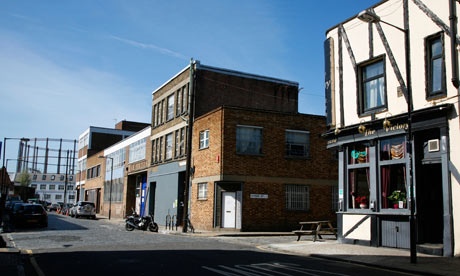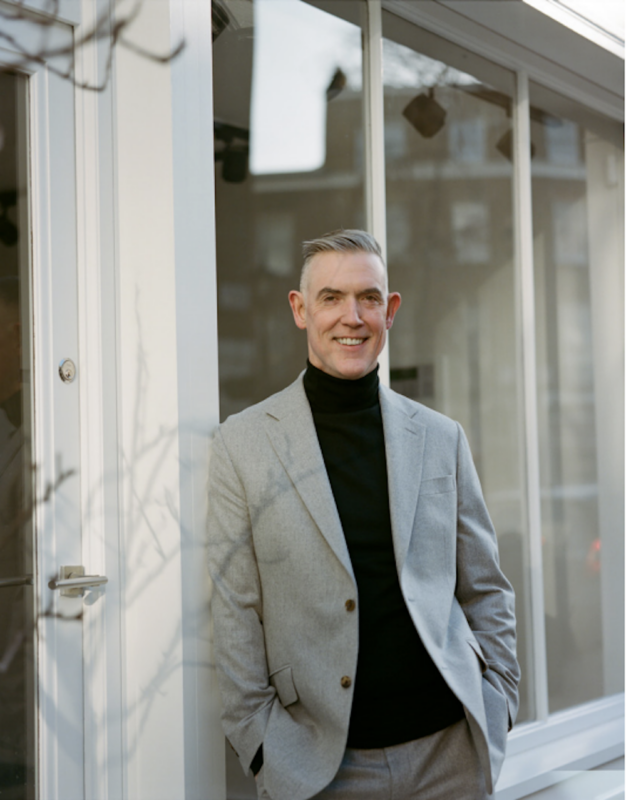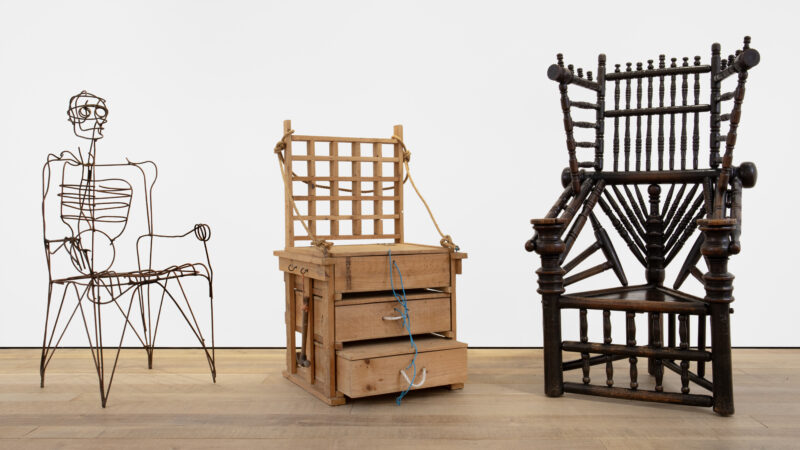
Gentrification and Olympic regeneration have pushed up rents for artists’ galleries on Vyner Street, Bethnal Green. Photograph: Londonstills.com /Alamy
In the boom years, Vyner Street in Bethnal Green became a thriving hub of the east London art scene, with critically acclaimed galleries attracting an eclectic mix of dealers, collectors, artists and art students to packed private views.
But a combination of the recession and spiralling property prices, spurred in part by the Olympic Games, has forced smaller east London galleries to relocate, declaring the scene on Vyner Street to be “absolutely terrible” and “dying”.
The two latest galleries to leave are Nettie Horn and Fred [London] Ltd, which have moved to Fitzrovia, near the West End, where more than 30 galleries have opened in the past four years, five in the past three months.
The area looks likely to cement its reputation with this month’s launch of Fitzrovia Lates when 40 of the area’s 43 galleries will open until 9pm on the last Thursday of every month, offering talks by artists, performances and curator tours.
Fred Mann, owner of Fred Ltd, said: “A lot of East End galleries have shut since the recession. The East End has only really flourished during a boom and now that boom is arguably over. When we moved into Vyner Street in 2005, it felt like a critical hub. You could come and see 12 amazing shows in 15 minutes’ walking distance. As the galleries I really admired moved out, collectors came less and less.”
When the first and best known gallery to open on Vyner Street, Modern Art, relocated to Fitzrovia in 2008, the area was still flourishing. But subsequent years have seen the departure of Ibid Projects, now in Hoxton Square; David Risley, which moved to Copenhagen; One in the Other, which closed completely; and Kate MacGarry, now in Shoreditch.
Matthew Slotover, co-director of the Frieze art fair, said: “Vyner Street is not the destination it was.”
Danielle Horn, director of Nettie Horn, which reopened last month on Riding House Street, home to a growing cluster of small commercial galleries in Fitzrovia, said: “The scene in Vyner Street is dying. There are a lot of galleries doing one-off projects. You have one or two of those spaces and that’s OK, but when it’s mainly that, it destroys the place.”
Chris Hammond, director of MOT International, which opened its first show on New Bond Street in April after moving from a run-down tower block off Broadway Market in Hackney, said Vyner Street “became absolutely terrible … almost anybody who had a bit of money was opening a space”.
Horn and Mann said some of the art spaces that remain on the street did not fit with the profile of their galleries.
Those staying put include Cultivate, a DIY artist-run venture which opened in September, and the Vyner Street Gallery, which both rent out exhibition space.
Vyner Street Gallery’s director, Howard Allman, said upcoming shows included students from fine art courses at Farnham, Greenwich and Falmouth universities. He said he could understand why commercial galleries were moving out: “You’d get more footfall in the West End. My business doesn’t depend on sales.”
Sandie Macrae, the director of ROOM Artspace London, which is moving from Hoxton to a Georgian mansion in Marylebone this summer, said: “When you meet collectors at international art fairs, they won’t come east when they come to London. We’ve all been banging on about the east is best but all the money is in the centre [of London].”
Amanda Wilkinson, the co-director of the Wilkinson Gallery, the largest remaining gallery on the street, said its collectors were still coming and sales were rising.
But Mann said Wilkinson and her husband were unaffected by the rising costs of running a gallery in the street, fuelled by the area’s gentrification and Olympic regeneration, because they own rather than rent their space, adding that it had a much higher international profile than the smaller galleries that have left or closed.
Mann said: “I am one of many smaller galleries deciding to move and I think that for all of us the feeling was the emphasis in the area had shifted. There are spaces above the street going for £1m. We’re being priced out of our local market.”
In May, Foxtons sold a three-bedroom house on Vyner Street for £2.6m – the owner is rumoured to be a famous female singer – and a four-bedroom apartment fetched £1.6m. Lewis McKale, of Davey Stone estate agents, recently sold a studio flat on the street for £675,000. He wants to buy a block on the corner of the street with a developer to convert into flats.
Hannah Watson, director of TJ Boulting gallery, which opened in Riding House Street in Fitzrovia in November, said they left their former space on Redchurch Street in Shoreditch after the landlord increased the rent after Terence Conran’s Boundary hotel and designer boutiques moved in. Its old building has now been turned into flats.
“We thought about moving into Boxpark by Shoreditch station. But it was £30,000-a-year rent for a shipping container, which was more than we paid for our gallery.”
But some of the gallerists who have moved west have deliberately avoiding Fitzrovia, wary of it falling victim to its own hype. Hammond, of MOT International, whose artists include current Turner Prize nominee Elizabeth Price, said: “I believe what will happen there is the same thing that happened in Vyner Street.”
Indeed, Modern Art, which was among the first wave of younger galleries to move into Fitzrovia, is relocating to Clerkenwell later this year.
Director Stuart Shave, whose clients include Francois Pinault, the billionaire owner of Christie’s auction house and Gucci, said: “I have friends in the East End whose rent is less than my service charge. I would question the motive of a gallery moving to a smaller space to meet collectors’ needs because artists like big spaces to show their work in.”
Indeed, Mayfair gallery Hada Contemporary last month opened a second, much larger, space on Vyner Street to provide a better showcase for his artists. Director Tom Woo said: “People said, ‘You’re crazy, everyone’s trying to move out!’
“But it’s such a pity to see the street going downhill. It’s past its heyday but the significance of the street remains. I think it needs to be more international to revitalise it.”
Another new arrival is Press Play Films, which produces pop videos, corporate and art films and commercials. Director David Morris said while the street was in decline and the quality of much of the art on show was in his opinion “poor”, he believed it still had potential as a creative hub.
“It’s sad to be surrounded by garages and telecommunications companies because that’s not what Vyner Street is about. It might not necessarily be an art exhibition space but it’s still very much creative.”
• A shorter version of this article appeared in print on Thursday 7 June 2012
guardian.co.uk © Guardian News & Media Limited 2010
Published via the Guardian News Feed plugin for WordPress.








